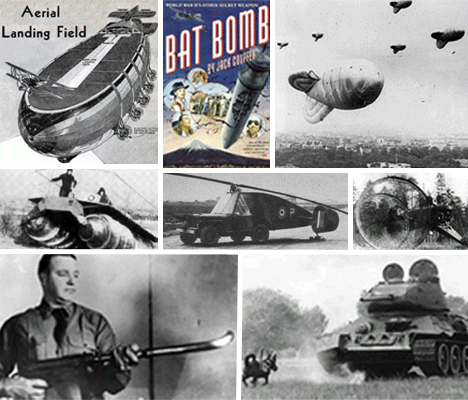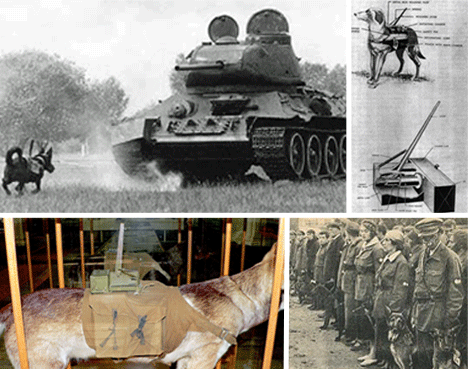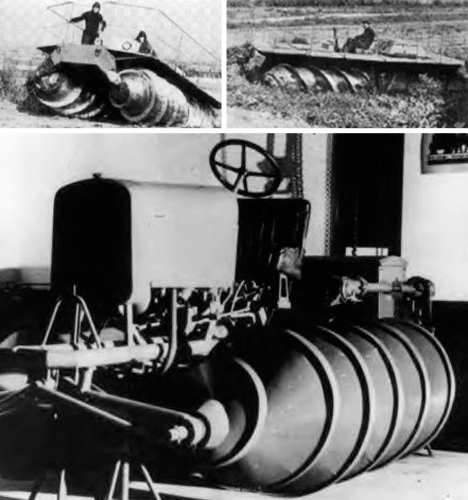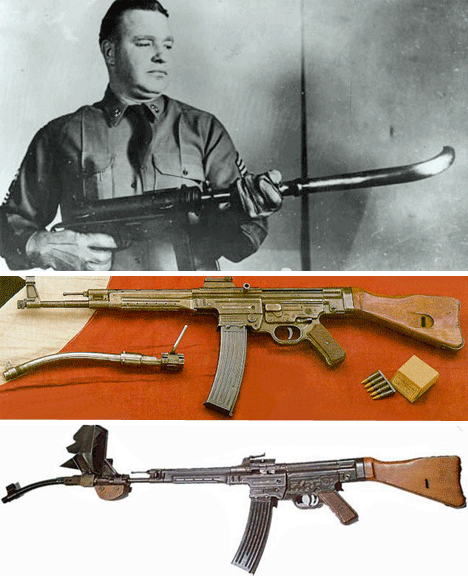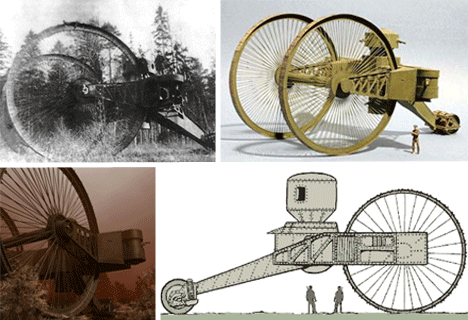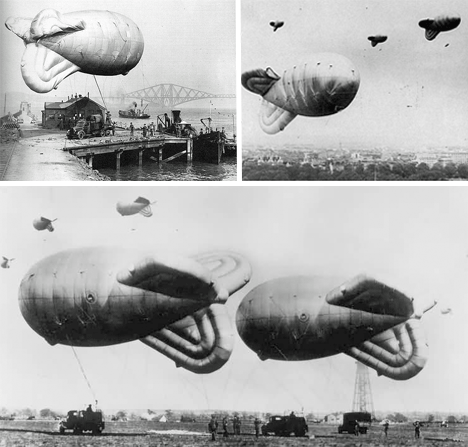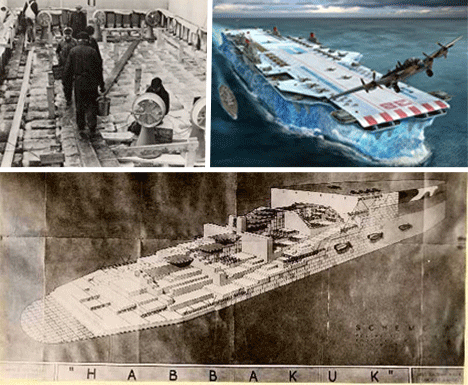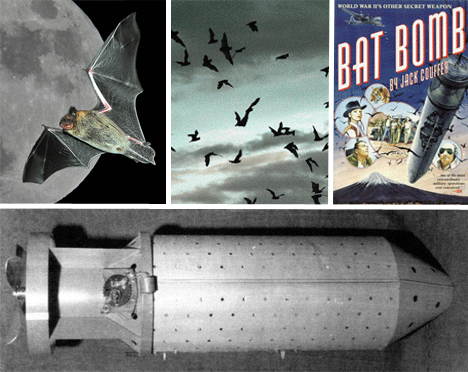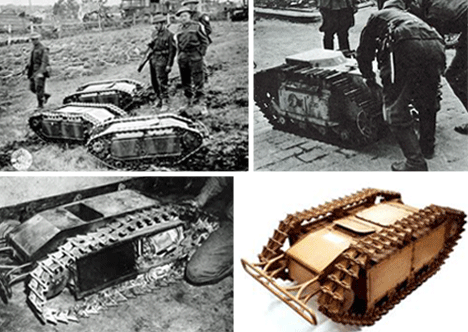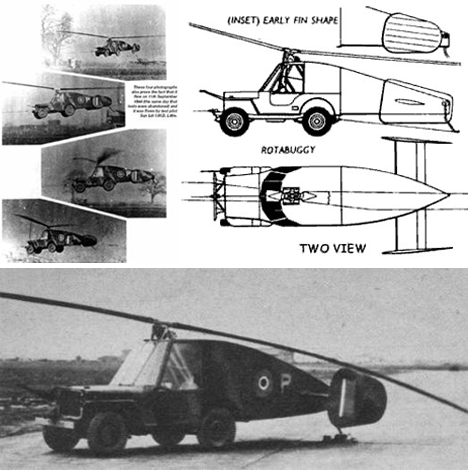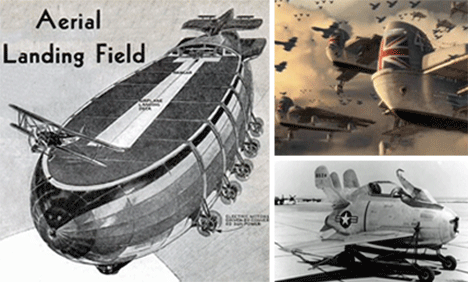In war, innovation can mean the difference between a glorious victory and a world shattering defeat. When research and development departments have the funding of a desperate nation behind them, and are faced with a long and brutal campaign, the ideas that are spawned can turn the tide of battle. It’s inevitable that some of the wilder ideas would later seem ridiculous. Here are 10 of the most extreme, and odd, military weapons created in the 20th century:
(Images via sovietempire, bodston, primeportal, wikipedia)
The brutality of war can be reflected by the means with which it’s fought. Anti tank dogs were a soviet creation, and said to have taken down over 300 German tanks during World War II. Dogs were taught to find food under tanks, and then starved before a battle. They would have bombs strapped to their backs, with levers that would trigger as soon as it hit the underside of a tank. When the lever snapped back, the dogs would explode, destroying the tank. The Germans eventually fought this tactic with flamethrowers, and a couple cases of dogs running amok away from battlefields was enough to cut back the program.
(Images via americainfra, panzerguy_01)
Corkscrew tanks didn’t run on the typical caterpillar type treads, instead propelled by giant corkscrews. Just like an electric screwdriver pulls into a piece of wood, so these treads would cruise along the ground, regardless of terrain. Their travel was a bit erratic, and the tanks had to be too lightweight to be useful in combat.
(Images via fastcompany, foothill)
When it comes to urban fighting, every corner can hide a group of enemy soldiers. Even the slightest advantage can win battles, so various weapons were designed to allow soldiers to see around corners, and fire around them behind the protection of a concrete wall.
(Images via nerdcore, autotrader, sobiratelzvezd, strange vehicles)
The Tsar tank was Russian built with two wheels 27 feet in diameter that pulled a much smaller set of wheels behind. Mounted with large and heavy guns, it was one of the few tanks that didn’t have treads, and was designed to overrun any obstacle. The design was bulky and ill conceived for the reality of battle, and was quickly dropped.
(Images via castlekay, annefrankguide, aerostar)
Barrage balloons were strung up by the hundreds over cities during World War II. Like floating mines, they would make it difficult for low flying enemy aircraft to make devastating bombing runs by threatening to bring them down with their taut wires and incendiary devices.
(Images via darkroasted, mondolithic, cim mcgill)
With the scarcity of metal toward the end of World War II, Project Habbakuk was an attempt to create aircraft carriers out of pykrete, a mixture of ice and wood pulp. Thick enough to withstand enemy fire, and easily repaired, pykrete would enable the construction of large ships with the uses of minimal resources. The war was completed before any of these ships became a reality.
(Images via 5348 Franco, tolka rover, brassdragon, bathead)
It’s surprising a prototype of a bat bomb was ever even made, but it was. The idea was simple: place incendiary explosive devices on Mexican Free-Tailed Bats, lower their temperature inside a bomb so they hibernate in transit, and then release them over an enemy city to roost in the infrastructure below. At a specific time, all the bats would explode in a thousand fiery blazes, igniting fires across the city.
(Images via weirdworm, photo collection, skylighters)
The Goliath tracked mine was a remote controlled anti tank mine that carried nearly 200 pounds of explosives and would be steered toward enemy troop or tank formations and detonated. These mines were created by the Germans and used throughout World War II, on all fronts, and were known as beetle tanks by Allied forces.
(Images via willys mb, fiddlers green, weirdworm)
The flying jeep was created to fulfill a contract to create a lightweight helicopter that could be landed in any terrain. Several prototypes were created but they never went into full production. No matter how good it looked on paper, the flying jeep’s goofy appearance gives a good indication of why such a flimsy hybrid would not do well in the heat of battle.
(Images via royal airfarce, rooksmoor, cracked)
Flying aircraft carriers had a brief stint in the collective imagination of a wartime populace. Much like hoverpacks and flying cars, the idea never came to fruition, only to live on in steampunk style novels and shows. They would be easy to shoot down, consume inordinate amounts of fuel, and had few advantages to counter an extended list of cons.
